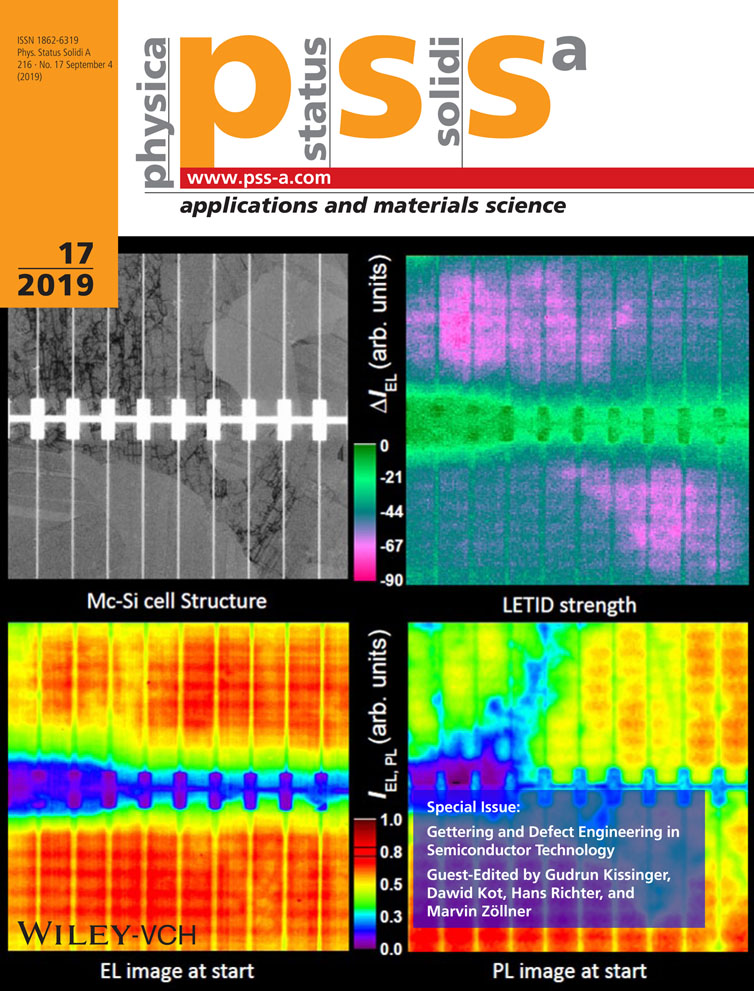Radiation Defects Created in n-Type 4H-SiC by Electron Irradiation in the Energy Range of 1–10 MeV
Abstract
Radiation damage produced in 4H-SiC n-epilayers by electrons of different energies is presented. Junction barrier Schottky power SiC diodes are irradiated with 1.05, 2.1, 5, and 10 MeV electrons with doses up to 600 kGy. Radiation defects are characterized by capacitance deep-level transient spectroscopy and capacitance-to-voltage (C–V) measurement. Results, which are compared with previous data obtained on 4.5 MeV electrons, show that the damage structure is very similar for all irradiation energies. Dominating is the generation of simple, thermally unstable defects evidenced by the presence of acceptor levels located at 0.25, 0.38, 0.60, and 0.72 eV below the 4H-SiC conduction band edge. With increasing energy of electrons, the number of simple defects saturates, and the production of more complex, cluster-related defects grow. Majority of introduced defects are acceptor centers, which compensate n-type (nitrogen) doping of the epilayer. The carrier removal rate increases with electron energy and follows well the classical nonionization energy loss (NIEL) scaling for electrons in silicon. The stability of introduced defects and their effect on carrier lifetime reduction are discussed, as well.
Conflict of Interest
The authors declare no conflict of interest.




